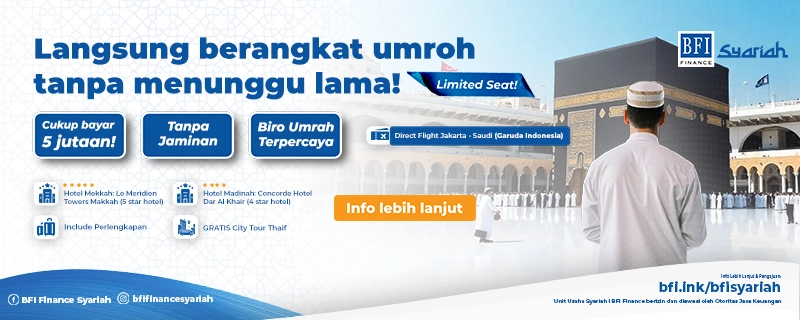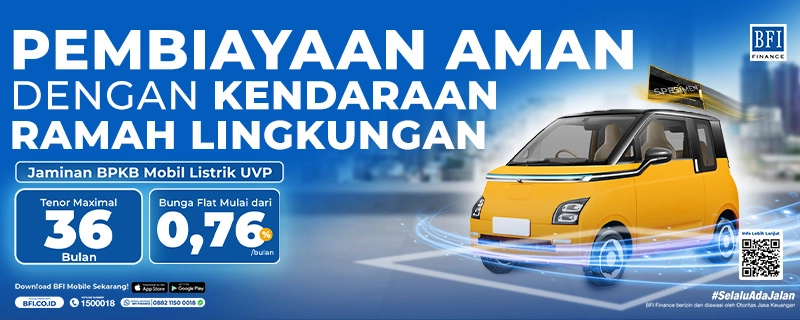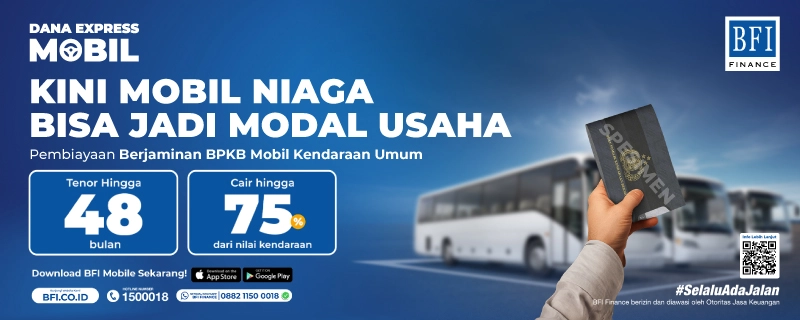Leasing has become a popular choice for both individuals and businesses to acquire valuable assets without having to purchase them outright. This system allows users to access high-value goods through flexible payment schemes. To understand it better, let’s take a closer look at what leasing is, its characteristics, and the most common types of leasing used today.
What Is Leasing?
Leasing is a financial agreement between a lessee (the user) and a lessor (the financing provider) that allows the lessee to use an asset for a specific period with periodic payments. At the end of the lease term, the lessee can choose to extend the contract, return the asset, or even purchase it, depending on the agreement.
Leasing is commonly used for vehicles, production machinery, office equipment, and other assets that support business operations. For companies, leasing serves as a practical solution to maintain cash flow stability without requiring large upfront costs.
Characteristics of Leasing
To distinguish leasing from regular loan systems, here are its main characteristics:
-
Involves two parties: the lessor (owner) and the lessee (user).
-
The object of the agreement is a fixed asset, such as a vehicle, heavy equipment, or machinery.
-
Payments are made periodically according to the contract duration.
-
Ownership does not always transfer, unless there’s a purchase option at the end of the lease.
-
Contains a financing element, as the lessee does not pay the full amount upfront.
-
The transfer of asset risks and benefits depends on the type of leasing agreed upon.
Types of Leasing
Leasing comes in several types, each with different characteristics and purposes. The type chosen usually depends on financing needs and the agreement between the lessor and lessee.
1. Operating Lease
An operating lease is intended for short-term financing and does not grant ownership rights to the lessee after the lease term ends. Lease payments are treated as operational expenses and are not recorded as fixed assets.
In this type, the lessor remains the legal owner and is responsible for maintenance, insurance, and repairs. Operating leases are suitable for businesses that need temporary access to equipment or vehicles without long-term commitments.
2. Financial Lease
A financial lease, or finance lease, allows the lessee to purchase the asset at the end of the lease term. Payments typically cover both the asset’s price and financing interest. The risks and benefits of ownership largely transfer to the lessee.
This type is commonly used for long-term financing such as acquiring production equipment, vehicles, or industrial machinery.
3. Capital Lease
A capital lease is a long-term leasing arrangement where the lessee often has the option to purchase the asset at the end of the lease. The leased asset is recorded as a fixed asset on the lessee’s balance sheet, making the lessee responsible for maintenance, taxes, and insurance.
This type is widely used by companies to obtain high-value productive assets such as machinery or operational vehicles without paying the full price upfront.
4. Sales-Type Lease
A sales-type lease is typically offered by manufacturers or sellers who lease their own products. The lessor earns profits from two sources: the asset’s sales margin and interest income from the lease payments.
This model is often used in the automotive or manufacturing industries, where producers provide direct financing to customers to boost sales and generate ongoing revenue.
5. Cross-Border Lease
A cross-border lease involves a lessor and lessee from different countries. It’s usually applied to the financing of high-value assets such as aircraft, ships, or industrial equipment.
This type of lease offers tax efficiency and funding flexibility for multinational companies. However, it involves complex procedures as it must comply with legal and tax regulations in both countries.
6. Leverage Lease
A leverage lease involves at least three parties: the lessor, the lessee, and a third party such as a bank or investor who provides part of the funding to acquire the asset. In this setup, the lessor doesn’t bear the full financing burden, and risks are shared with other parties.
Payments from the lessee are used to fulfill obligations to the lender. This type of lease is often used for financing large-scale assets such as aircraft, energy infrastructure, or industrial facilities.
Benefits of Leasing
Leasing offers numerous advantages for individuals and businesses. It provides easier access to capital goods without the need for large initial expenses. After learning about the different types of leasing, here are the main benefits you should know:
1. Protection Against Inflation
In a leasing system, installment amounts are fixed from the start of the contract. This means that price increases due to inflation will not affect your payments. It offers financial certainty and helps maintain budget stability—especially for business owners managing long-term expenses.
2. No Additional Collateral Required
Unlike bank loans that often require separate collateral, leasing does not demand additional guarantees beyond the leased asset itself. The asset serves as its own collateral, making this option accessible for individuals or businesses without sufficient assets for loan security.
3. Flexible and Adjustable
Leasing contracts are flexible. Lessees can adjust the payment term, installment amount, or repayment method according to their financial capacity. This flexibility makes leasing a practical option for anyone seeking financing without excessive financial strain.
However, flexibility depends on each financing company’s policy—some lessors may not allow contract adjustments midway.
4. No Upfront Capital Needed
Lessees don’t need large upfront funds since the lessor covers the asset’s purchase cost. This allows businesses to allocate their cash for operational expenses instead of asset purchases.
5. Simplified Process
Leasing applications are relatively simple. The requirements are easy, and approval usually takes a short time. That’s why leasing can be a great solution for individuals or businesses needing immediate asset access.
6. Legal Certainty and Protection
Every leasing agreement is governed by a legally binding contract that protects both parties. Lessees are assured of asset usage rights as agreed, while lessors have legal grounds to ensure timely payments.
7. Free from Asset Depreciation Risks
In an operating lease, ownership remains with the lessor until the contract ends. Therefore, the lessee is not responsible for depreciation or obsolescence. Once the lease term is over, the lessee can return the asset or renew the contract to upgrade to a newer version.
In essence, leasing provides individuals and businesses with the flexibility to acquire assets without bearing heavy upfront costs. With its diverse types and numerous benefits, leasing has become an essential tool for maintaining cash flow stability and supporting business growth.
If you want the same convenience in managing finances and achieving your financial goals, choosing a trusted financing institution is key. That’s where BFI Finance comes in.
Through its safe and transparent financing services, you can apply for loans secured by motorcycle BPKB, car BPKB, or house/shop certificates. The process is fast, simple, and designed to give maximum comfort to every customer.
All BFI Finance services are officially licensed and supervised by the Financial Services Authority (OJK). With over 40 years of experience, BFI Finance is ready to be your trusted partner in achieving financial goals—whether for business capital, asset acquisition, or personal needs.
Don’t let your financial plans remain just a dream. Make them happen now, because #SelaluAdaJalan with BFI Finance toward a brighter financial future.






